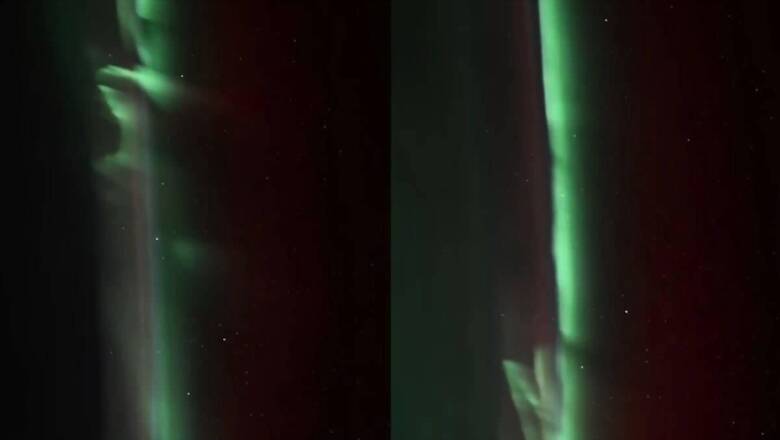
views
Aurora borealis, also known as the northern lights, are one of the most magical natural phenomena observed from Earth. People often travel to far-off countries in the Arctic region to have a chance to spot these stunning colourful lights that appear straight out of fantasy films. On Thursday, the International Space Station (ISS) shared a video that showed green aurora covering the Earth’s surface.
The light looks like green fog is covering the Earth. This time-lapse video was taken from the ISS, which is stationed 250 miles (400 kilometres) above the blue planet.
In the caption, ISS wrote, “While often spotted from the ground near the Northern and Southern Hemispheres, the orbiting laboratory’s unique vantage point gives low Earth orbit crews a front-row seat to the colourful spectacle.”
The video has received over 35,000 likes so far. NASA Earth commented on the video, “These views never get old.”
A user described the scene as, “Truly the most beautiful, jaw-dropping feature in nature to witness!”
Another user wrote, “Magical light that invites you to a world of beauty.”
Aurora borealis appears when particles from solar storms cross Earth’s magnetic field and reach the north and south poles. The solar storm particles interact with gasses in Earth’s atmosphere and produce light. When they interact with oxygen, green and red light is produced. When solar storm particles mix with nitrogen they give off a blue and purple glow. The lights can last anywhere from a few minutes to a couple of hours, depending on the strength of the solar storm.
Earth is not the only planet where aurora borealis appear. Any planet that has an atmosphere and a magnetic field sees aurora borealis as a result of interaction with solar storm particles.
In May, a strong solar storm produced stunning aurora borealis that was seen all across from Australia to Canada. The northern lights appeared sporadically from May 10 till May 12. Places where northern lights are usually not seen also saw bright mythical looking lights covering the sky. Social media lit up with photos of colourful skies.
Absolutely biblical skies in Tasmania at 4am this morning. I’m leaving today and knew I could not pass up this opportunity for such a large solar storm. Here’s the image. I actually had to de-saturate the colours. Clouds glowing red. Insane. Shot on Nikon. Rt appreciated pic.twitter.com/210hlkmoeg— Sean O' Riordan (@seanorphoto) May 10, 2024
Many tourists take special trips to countries like Iceland, Sweden, Norway, Finland and Alaska in the United States to catch aurora borealis. The best time to catch northern lights is between spring and fall equinoxes, which is from September to mid-April. This is when solar activity ramps up.




















Comments
0 comment